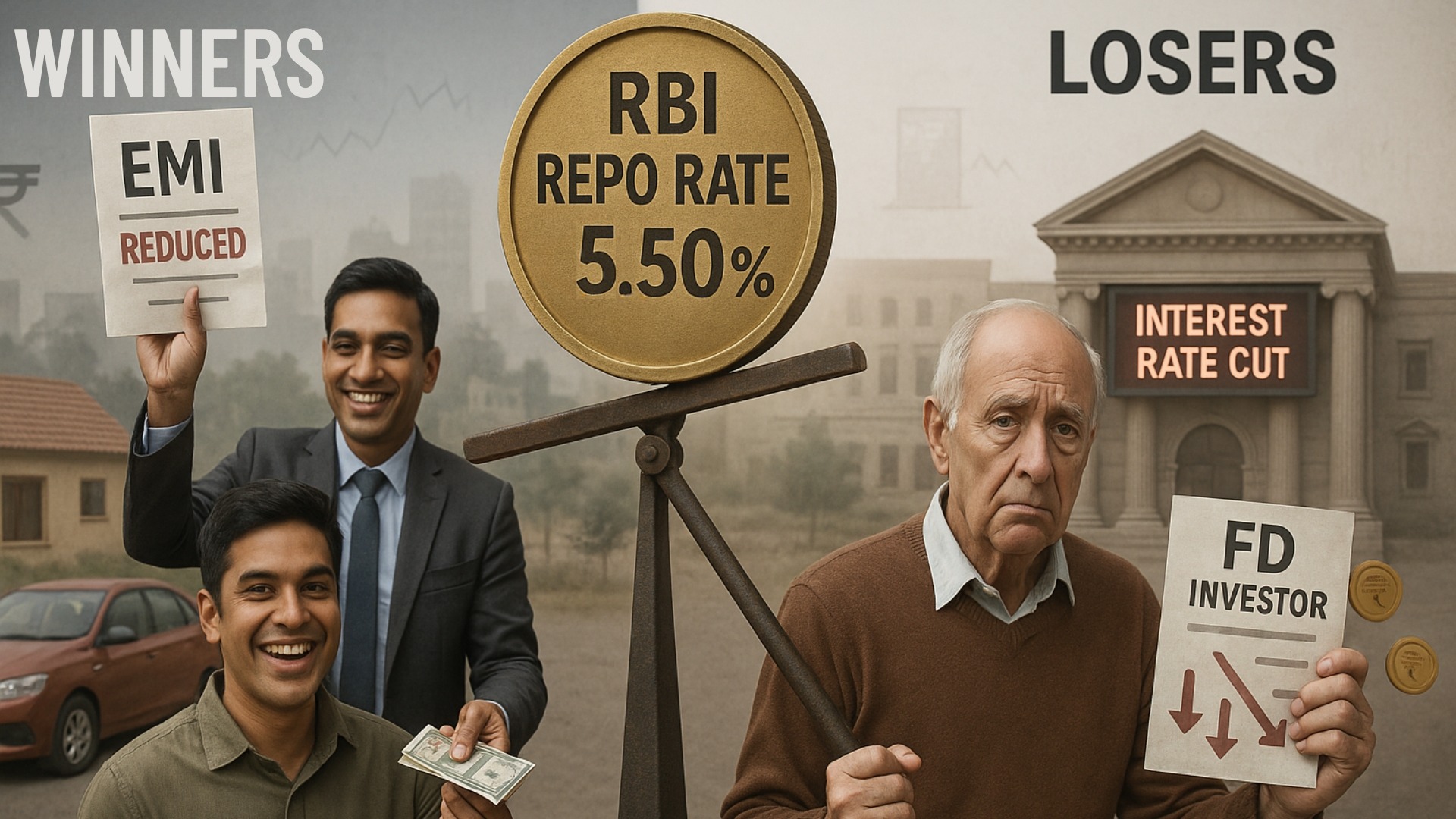There are four friends who usually meet every other day and discuss what’s happening in India and globally. Two days back, they met again, but this time, everyone was happy except one guy. The remaining three people started asking, what happened?
But why was he dull? To give an idea, he had kept his life savings in a fixed deposit and also had a loan at a fixed interest rate.
So, one among the remaining three people asked him, Are you sad because of the repo rate news? Then this guy sadly replied, yes.
The remaining two people had no clue what was happening. The person who asked the question is Karthik, and the guy who was worried is Nikhil. The remaining two people are Dinesh and Jagadeesh.
Dinesh and Jagadeesh were confused, so Karthik started explaining the whole scenario, like what the repo rate is, what the impact is, and several other unique insights.
If you are interested in knowing the whole scenario like Dinesh and Jagadeesh, this article will help you understand the concept clearly.
Three days back, which is on June 6th, the Reserve Bank of India announced that it is going to cut the repo rate. The repo rates have reduced by 0.50%, which resulted in bringing down the rates to 5.50%.
But what is a repo rate? Simple, let’s say when you want a loan, you will go to a bank and get the money at a certain rate. Banks will lend you money, but have you ever thought, what if banks need money?
Now if banks need money, they will get it from RBI at a certain rate, and that rate at which RBI lends money to commercial banks is called the repo rate. This rate is very critical for the country’s economic direction.
But if banks are taking money, where are we involved? Banks take money from the RBI at a certain rate and then lend it to you at a rate higher.
When RBI increases repo rates, you will have to take a loan at higher rates; if RBI reduces the repo rates, you can get it at a lower rate.
But when does RBI change the rates?
The answer to this question lies in the inflation. What do you mean by inflation? Inflation is a rise in the price levels of goods and services in an economy, which further results in the purchasing power of money.
Let’s take an example to understand this even better.
There are 100 people who are earning a good amount and ending up with excess money after paying for their expenses.
Now if you are saving and have more money with you, what will you do? You will spend mostly. Right? What if the 100 people do the same thing?
We will spend money at a higher rate than usual. So, if, let’s say, 100 people went to buy a mobile, but there are only 15 mobiles available. What happens?
They try to get it at higher prices because they have money and want the mobile. Demand is so strong, but supply is less; more cash is also there in the economy.
It drives the mobile prices rapidly because of the above factor. But if we understand, is mobile changing? Or did the number of mobiles available increase? Not only due to demand did the prices increase.
When the prices of goods increase, it will create a scenario of inflation. Now how do we tackle this situation?
RBI increases the repo rates, but why? How is it interlinked? So why are you spending more because you have the ability to spend and also have excess cash, but what if your loans become expensive? You will end up with less money compared to the previous situation, right?
So, when you have less money, you spend less, meaning the demand that was artificially created earlier will now reduce. When demand reduces, the prices will come down.
So, ultimately inflation reduces, and the RBI cuts the rate.
To give you more clarity about the inflation levels in India now. India’s inflation levels are at a 6-year low in April, and the estimates are 2.9% as of Q1, 3.4% in Q2, 3.5% in Q3, and an estimated 4.4% in Q4.
These estimates are for FY2026.
Now let’s dig deeper as we understand what the repo rate is and when and why the RBI hikes and cuts rates.
Now what are the effects of these decisions?
When repo rates are reduced, there will be the biggest advantage for those who have outstanding loans.
When RBI cuts the rate, taking money becomes cheaper for the commercial banks from RBI, meaning RBI lends at cheaper rates, and the banks will also pass on that benefit to customers as well.
This will help you in reducing the EMI amount; instead, you will pay less than what you usually pay. But if you are taking a loan at a fixed interest rate, then consider refinancing.
If you refinance your loan, you will get it at a cheaper rate.
But if you are someone who does fixed deposits, it is not positive news for you.
Why? Banks pay you interest for FDs at a certain rate, but what if RBI is giving them money at a cheaper rate?
So, they don’t need to pay you higher rates to attract them when they can now get money at a cheaper rate.
So, this is when banks also lower the interest rate that they offer on fixed deposits.
If you are someone who relies on the FD, in the coming few months you can see a reduction in your returns.
Now you understand what Nikhil was going through.
He had kept all his life savings in a fixed deposit, expecting a certain return to support his financial needs. At the same time, he had a loan at a fixed interest rate so even though loan EMIs didn’t reduce for him, the returns on his savings were now going to shrink.
Also Read: The Secret Behind India’s Booming Fintech Industry: What’s Fueling the Growth










